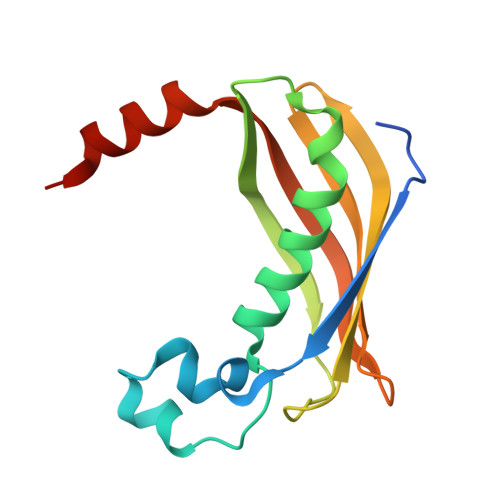Structural and biochemical studies of a fluoroacetyl-CoA-specific thioesterase reveal a molecular basis for fluorine selectivity.
Weeks, A.M., Coyle, S.M., Jinek, M., Doudna, J.A., Chang, M.C.(2010) Biochemistry 49: 9269-9279
- PubMed: 20836570
- DOI: https://doi.org/10.1021/bi101102u
- Primary Citation of Related Structures:
3P2Q, 3P2R, 3P2S, 3P3F, 3P3I - PubMed Abstract:
We have initiated a broad-based program aimed at understanding the molecular basis of fluorine specificity in enzymatic systems, and in this context, we report crystallographic and biochemical studies on a fluoroacetyl-coenzyme A (CoA) specific thioesterase (FlK) from Streptomyces cattleya. Our data establish that FlK is competent to protect its host from fluoroacetate toxicity in vivo and demonstrate a 10(6)-fold discrimination between fluoroacetyl-CoA (k(cat)/K(M) = 5 × 10⁷ M⁻¹ s⁻¹) and acetyl-CoA (k(cat)/K(M) = 30 M⁻¹ s⁻¹) based on a single fluorine substitution that originates from differences in both substrate reactivity and binding. We show that Thr 42, Glu 50, and His 76 are key catalytic residues and identify several factors that influence substrate selectivity. We propose that FlK minimizes interaction with the thioester carbonyl, leading to selection against acetyl-CoA binding that can be recovered in part by new C═O interactions in the T42S and T42C mutants. We hypothesize that the loss of these interactions is compensated by the entropic driving force for fluorinated substrate binding in a hydrophobic binding pocket created by a lid structure, containing Val 23, Leu 26, Phe 33, and Phe 36, that is not found in other structurally characterized members of this superfamily. We further suggest that water plays a critical role in fluorine specificity based on biochemical and structural studies focused on the unique Phe 36 "gate" residue, which functions to exclude water from the active site. Taken together, the findings from these studies offer molecular insights into organofluorine recognition and design of fluorine-specific enzymes.
- Department of Chemistry, University of California-Berkeley, Berkeley, CA 94720-1460, USA.
Organizational Affiliation:
















